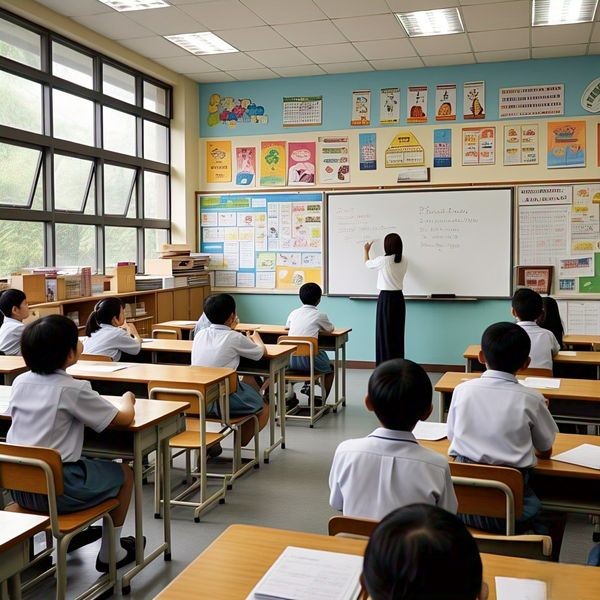Choosing the right education pathway after the Primary School Leaving Examination (PSLE) can feel overwhelming for parents and students alike. With the changes to the PSLE scoring system secondary school placements now work a little differently. On top of that, many families are also exploring the option of enrolling their children into a private school for greater flexibility or a different educational environment.
What Is the PSLE Scoring System All About?
The PSLE scoring system secondary school placements rely on what’s called the Achievement Level (AL) system.
Instead of the old T-score system, students are now graded on individual subject performance, with AL scores ranging from 1 (best) to 8 (lowest) for each subject.
The four AL scores are then added up, and the total score determines the secondary school admission opportunities.
Key Features of the PSLE Scoring System
Let’s break it down:
-
Achievement Levels (ALs): Each subject is graded from AL1 to AL8.
-
Total PSLE Score: Sum of the four subject ALs, giving a range from 4 to 32.
-
Placement: A lower PSLE Score means a better chance at more competitive secondary schools.
This new psle scoring system secondary school placement model emphasizes personal mastery instead of relative ranking against peers a more student-centric approach.
Why Was the PSLE Scoring System Changed?
The main reasons:
-
Reduce excessive academic competition
-
Encourage a broader definition of success
-
Support student well-being by easing stress
With the change, students no longer need to chase every last mark. Instead, they aim for solid understanding a shift welcomed by many, including parents looking at private school options.
How the PSLE Score Impacts Secondary School Choices
Your child’s PSLE Score decides which secondary schools they can apply to. Generally:
-
Lower scores open doors to Express streams
-
Mid-range scores may qualify for Normal (Academic) streams
-
Higher scores (meaning lower academic performance) lead to Normal (Technical) streams
Understanding how the psle scoring system secondary school process works helps parents and students plan smarter, whether aiming for top public schools or considering a private school pathway.
What Happens if My Child’s Score Isn’t Ideal?
If the PSLE score isn’t strong enough for your preferred secondary schools, don’t panic. Options include:
-
Choosing a school offering a strong nurturing environment
-
Exploring Direct School Admission (DSA) routes
-
Considering a private school that may offer a different curriculum better suited to your child’s strengths
The psle scoring system secondary school admissions process is important, but it’s not the end of the road — it’s just the beginning of new opportunities.

When Should You Consider a Private School?
Here are a few scenarios:
-
Your child has specific learning needs not met by mainstream schools
-
You prefer a broader, global education experience
-
Your child thrives in smaller classroom settings
-
You want more flexibility in curriculum and learning pace
Whether due to PSLE performance or long-term educational goals, choosing a private school can sometimes be the smarter move.
Can Private Schools Help My Child If They Struggled with PSLE?
Absolutely. Many private schools specialize in individualized education plans that focus on strengths rather than weaknesses.
While the psle scoring system secondary school placement follows a standardized model, private schools offer an alternative where your child’s talents academic or otherwise can shine.
Tips for Choosing the Right Path After PSLE
-
Know Your Child’s Strengths and Weaknesses: Not every child thrives under the same system.
-
Visit Schools (Both Public and Private): Get a feel for the environment.
-
Look Beyond Academics: Extracurricular activities, school culture, and student support systems matter.
-
Understand the Curriculum: Whether it’s a mainstream secondary school or a private school, the academic program should align with your child’s goals.
Common Myths About Private Schools
Let’s clear up a few misunderstandings:
-
Myth: Private schools are only for the rich.
-
Reality: Families from all walks of life choose private education for various reasons.
-
Myth: Private schools have lower academic standards.
-
Reality: Many private schools have rigorous curricula and outstanding track records.
Knowing the truth helps parents make informed decisions post-PSLE.
Conclusion
Navigating the new psle scoring system secondary school pathways may seem challenging at first, but with the right information and mindset, it becomes an exciting opportunity to shape your child’s future.
Whether you stick to traditional options or explore the private school route, remember — the ultimate goal is your child’s happiness, growth, and success.
Make your choices based on your child’s individual needs, and you’ll be setting them up for a rewarding secondary school experience and beyond.
FAQs
1. What is the biggest difference between private schools and mainstream secondary schools?
Private schools often offer international curricula and more personalized education approaches, while mainstream secondary schools follow the national syllabus.
2. Can I transfer to a private school after receiving PSLE results?
Yes, many private schools accept students post-PSLE based on interviews, entrance tests, or past academic performance.


